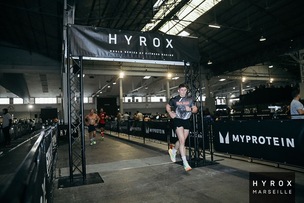WHILE many people are this year focusing on the 75th anniversary of D-Day in the Second World War - there are still important milestones to be marked for the first global conflict.
And two of them involve the presentation of the first King’s Colours and their siting in St Mary’s Church in Barnsley.
It is 100 years since this momentous occasion and work is now going on to return them to their original chapel home, preserved for future generations.
Jane Ainsworth is co-ordinator of the Barnsley Pals Colours Project and is working closely with the Rev Canon Stephen Race to complete these final phases.
The author of a history of the Colours, Jane said: “Of course the anniversary of D-Day is hugely important, but we still have significant centenary dates to commemorate for the First World War this year, not least the signing of the Treaty of Versailles on June 28 and Peace Day on 19 July 19, 1919.
“And two significant occasions for Barnsley are the presentation of the first King’s Colours and then laying them up in St Mary’s Church.”
Jane’s research shows that a silk Union Flag was awarded to the extant battalions of Kitchener’s New Armies after the Armistice as King George V decided they ought to be recognised for their loyal service. They had not received them when first created, as battalions of the Regular and Territorial Army were, because they were temporary.
The 13th (First Barnsley) Battalion of the York and Lancaster Regiment (13th York and Lancaster), who formed part of the Army of Occupation after November 11, 1918, were presented with a silk Union Flag on February 19 in northern France; these became Colours when consecrated.
As the 14th York and Lancaster had been disbanded a year earlier and the soldiers transferred into the 13th or other York and Lancaster battalions, the Colours awarded to the 13th York and Lancaster were for all the Barnsley Pals. The 14th York and Lancaster and other disbanded battalions received their Colours later.
“We now want to frame the two Colours to preserve (not conserve) them, provided we can raise the necessary funds, and to display them in the War Memorial Chapel again as they were originally laid up there,” said Jane.
Fr Stephen Race is fundraising to conserve the impressive First World War Memorial Pillar with 200 names.
There are also plans to hold a special event to mark the centenary of depositing the Colours in St Mary’s on Thursday May 29 1919, which was almost exactly four years after the two Pals battalions had left Barnsley amidst cheering crowds.
The later occasion stirred up a combination of emotions as people celebrated the return of the Barnsley Pals and their achievements during the war but felt the loss of those who had not come home or who had survived but suffered from mental or physical disabilities.
This event is being planned for the afternoon of Sunday June 2 and Jane hopes Barnsley Council will give permission to close a few roads in the town centre to recreate some of the procession of 100 years ago from the Drill Hall in Eastgate (now part of the Barnsley Chronicle’s offices) to Queen’s Ground up Market Hill to the church.
More details of this will be made public nearer the time, and schools and groups will be asked to take part.
“We are keen to march with the replica Colours that were commissioned from Flying Colours of Knaresborough last year for the Armistice Centenary Commemoration at St Mary’s,” said Jane.
“This was thanks to a second grant from the Dearne Valley Landscape Partnership in addition to some generous donations from individuals and groups.”
These replica flags were displayed in St Mary’s in October along with a display banner made by Platinum HPL of Harrogate, two There But Not There soldier silhouettes donated by the Armed Forces Covenant and a mannequin from Sheffield Emmaus on to which ribbons were tied with the names of any relations.
Jane’s booklet - History of the King’s Colours for the Barnsley Pals Battalions - is helping to raise funds for the project. Costing £5, it has 50 pages and features many old photographs.
Copies are available in the Barnsley Chronicle Bookshop, Barnsley Antiques Centre or Clifton Park Museum (also the York and Lancaster Regimental Museum) in Rotherham. All proceeds will go towards framing the two Colours.





























